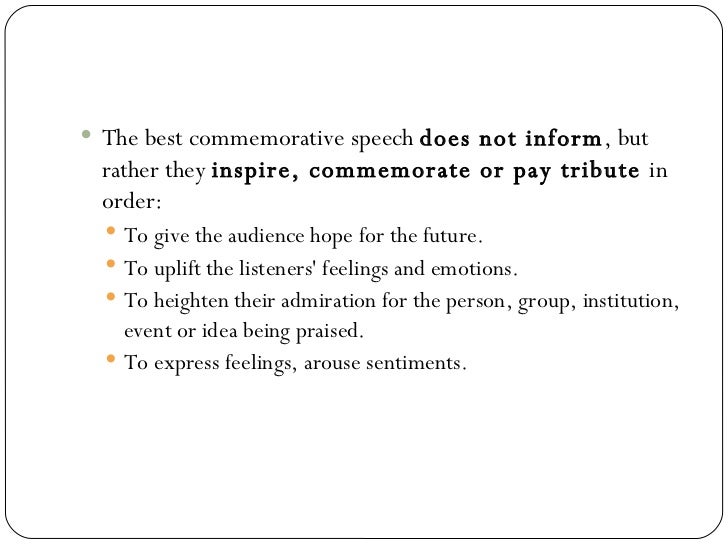
Image source: https://image.slidesharecdn.com/commemorativespeechtemplate-090317204246-phpapp01/95/commemorative-speech-template-6-728.jpg?cb=1237322599
1. Preparation:
a. Know your audience; funeral audiences are very receptive, empathetic, and understanding. Relax; they are on your side, setting judgment aside for the more supportive feeling of compassion.
b. Repeatedly rehearse and practice; know it and when you are ready, deliver it to someone close to you.
c. Understand the purpose; the eulogy is intended to express meaningful, touching, heart-felt feelings and experiences in relation to the deceased loved one.
d. Dress appropriately in comfortable, well fitting, and conservative clothing.
e. Bring water to the podium and sip it before starting and during the speech. Clear your throat and breathe deeply to relax. This should help calm nervousness.
f. Remember no-one knows about your loved one like you; you are the expert.
2. Writing:
a. Have a logical order in the speech; an introduction, a body, and a conclusion. The introduction should state what you intend to say, the body should say it, and the conclusion should review what has been said in the body.
b. Write your speech or should this process be overwhelming contact www.LastWordEulogies.com.
c. Use stories in your eulogy; this keeps the audiences attention and helps them remember and discuss your loved one long after the memorial. Use only appropriate humor.
3. Visual aids:
a. A photograph, power point presentation or handouts enhance the speech.
4. Delivery:
a. Avoid reading, speak clearly and project your voice using tone and pitch variation. Adjust speed and sentence length to match the content.
b. Use eye contact to connect with members of the audience.
c. Assume a confident manner (even if you dont feel it). If a cry surfaces the audience will understand; take a moment to compose yourself and then continue.
d. Thank the audience.
5. Be yourself; take your time and do your best.